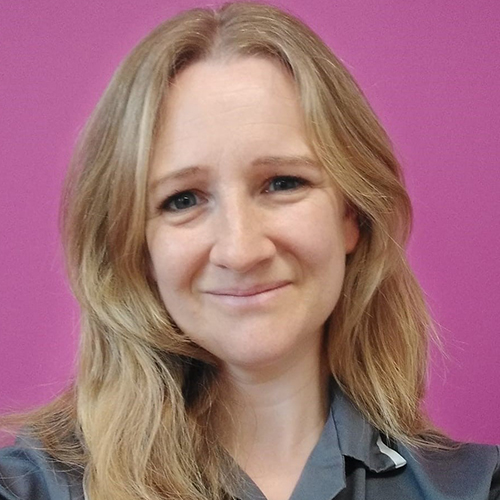Caroline Hughesdon

Caroline leads Accelerate’s community wound care team in one of the most deprived and diverse boroughs in London. She has worked in tissue viability clinical care across clinics as well as in the community, supporting District Nurses, Practice Nurses, Children’s Nurses and Nursing Home staff.
Since joining Accelerate in 2016 Caroline has been a key member of Accelerate’s successful clinical team, who are developing new and ground breaking techniques that have led to some of the fastest healing rates in the NHS for lower limb wounds. She is passionate about high quality MDT working in the community and has seen how when this is done well it can transform patient’s lives. Caroline is currently applying her clinical knowledge and experience to an MSc in Clinical Skin Integrity and Wound Care Management.
Free Paper Presentation (Research category) at The Society of Tissue Viability 2022 Conference
Impact of early recognition, prompt referral and high levels of compression to achieve excellent venous ulcer healing rates within a community clinic
Abstract
Background: It is estimated that for venous leg ulceration, UK practice only achieves a 47% healing rate by 12 months (NWCSP 2020). Evidence suggests that these poor outcomes for patients is due to the inadequate use of therapeutic compression and the belief that compression tolerance is low. There is no known national data to determine use of compression.
Method: Accelerate CIC, a specialist leg ulcer service, directly delivers leg ulcer clinics in an inner London borough. Through a retrospective review of the caseload, we identified 63 patients referred for venous ulcer management assessed between an 18 month period: 01/04/20 to 30/06/21. We tracked their progress to healing at 6, 12 and 24 weeks. Two patients were lost to follow up.
We reviewed their complexity at assessment identifying those with bilateral ulceration, history of recurrent infection and infection at assessment and wound duration. The review also established compression usage prior to referral and at assessment.
The analysis includes all patients with a venous or lympho-venous aetiology. Results were compared to 2018/2019 data.
Results:
|
LEG ULCER Clinics |
2018/19 24 months |
2020/21 18 months |
|
Patients with venous ulcers |
119 |
63 |
|
Ulcer duration < 3 months |
50% |
84% |
|
Bilateral ulceration |
21.8% |
9.5% |
|
Mean Pain |
2.6 |
1.9 |
|
Recurrent infection |
16.8% |
11% |
|
Infection at assessment |
16.8% |
3% |
|
Any form of compression prior to referral |
48.7% |
15.9% |
|
Compression delivered at assessment |
95.8% |
100% |
|
11% |
8% |
|
57% |
59% |
|
28% |
33% |
|
Healed at 6 weeks |
39% [58/119] |
33% [21/63] |
|
Healed at 12 weeks |
67% [78/116] |
62% [39/63] |
|
Healed at 24 weeks |
88% [99/113] |
95% [58/61] |
Conclusion
- Supporting Practice Nurses in Early recognition and prompt referral from General Practice, can result in fewer people with bilateral ulcers, infection and pain. Evidenced by 84% of this cohort referred to us under 3 months.
- Minimal reduced compression was used following assessment. There is good tolerance of effective and strong compression within specialist settings.














